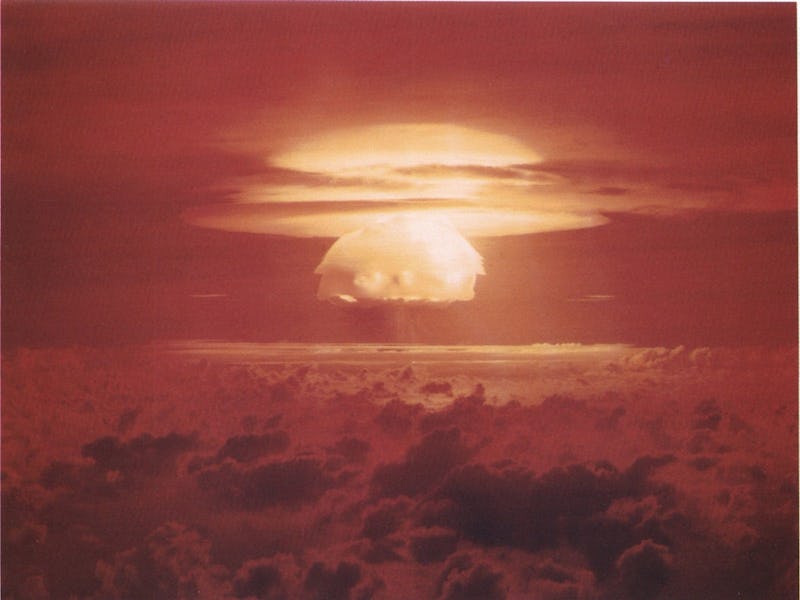2016 Doomsday Clock Shows We're Still 3 Minutes from the Apocalypse
"We gotta wake up, we gotta face the apocalypse, and we gotta prevent it."

All aboard the apocalypse hype train: On Tuesday afternoon, the Bulletin of the Atomic Scientists announced that we petty earthlings are still screwed. The doomsday clock represents a “summary view of leading experts deeply engaged in the existential challenges of our time,” according to the Bulletin’s executive director Rachel Bronson. And she announced, “with utter dismay,” that “the clock remains at three minutes to midnight” for 2016.
We’re doomed.
Arizona State University New Origins Initiative Director Lawrence Krauss (standing) during a news conference at the National Press Club January 26, 2016 in Washington, DC.
Time, then, has come to a halt: In 2015, the Bulletin advanced time two minutes, setting the clock at a mere three minutes from midnight. In other words, these scientists thought that the end of the world was looking pretty imminent. Evidently, nothing has changed on that front. Excluding 2015, we have not seen a doomsday clock this close to midnight in the past 20 years.
The clock has never made it past 23:58, which it reached in 1953 after the Soviets performed hydrogen bomb tests. (If and when it reaches 23:59, it’s safe to assume we’ll all be running for high ground or cowering in a dark corner of Mom’s attic.) It’s not uncommon for the clock to remain in the same position for multiple years: the clock has moved just 22 times in its 69 years of existence.
In 2010, the clock was judged to be six minutes to midnight.
What is uncommon — and what’s bad news for us earth-dwellers — is for the clock to stay at a time so close to “midnight.” In the words of Bronson, the Bulletin’s executive director and publisher: “the decision not to move the clock in 2016 is not good news, but an expression of grave concern.”
This clock’s been ticking since 1947, when Manhattan-project physicists looked around at what a monster they had created in the atomic bomb and decided that they should make it clear to the inhabitants of this planet just how doomed everything was.
Original cover of the Bulletin of the Atomic Scientists
And thus a grand metaphor was born, a metaphor so overwhelmingly simple that you’d never guess its referent was the demise of humankind. The metaphor: a clock. On this clock, midnight represents doomsday.
What’s odd about this clock is that it does not work chronologically, like most clocks. The clock’s obligation to the metaphor entails that it renders time sinusoidally. (Imagining what it would feel like to experience time in such a way makes me even more anxious than this clock business.) As perceived threats to humanity and earth rise and fall, the clock moves, respectively, forward and back.
Wikimedia Commons
The announcement.
The experts at the table — Lawrence Krauss, Thomas Pickering, Sivan Kartha, and Sharon Squassoni — stressed that these six crucial factors (below) both led to their decision to keep the clock at three-‘til and will determine whether or not the clock moves next year. (They also have fancy charts and graphs that really drive the point home.)
1) Dramatically reduce proposed spending on nuclear weapons modernization programs.
2) Re-energize the disarmament process, with a focus on results.
3) Engage North Korea to reduce nuclear risks.
4) Follow up on the Paris accord with actions that sharply reduce greenhouse gas emissions and fulfill the Paris promise of keeping warming below 2 degrees Celsius.
5) Deal now with the commercial nuclear waste problem.
6) Create institutions specifically assigned to explore and address potentially catastrophic misuses of new technologies.
(Read their in-depth explanations here.)